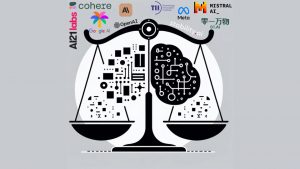Simplified process modeling
Anyone in your environment knows certain processes that are important in your daily life. For example, if you go to a supermarket, you can find replenishers who have to fill the shelves that are left empty, and for this they follow a specific process. The management of customer complaints in an online store also requires a predefined process. When you ask for a loan at a bank, the person you talk to has a clearly defined process in mind. Various processes are followed every day in the construction of a building… We could continue giving examples of this over and over again…
Knowing the processes of your organization in which you participate is essential. This allows you to set clear objectives and guarantees, and drive collaboration when multiple people or systems need to interact to successfully complete a particular process. This is why organizations often have a digital repository of up-to-date process descriptions… and why, in the last 30 years, various software solutions for process modeling have emerged. In the early 2000s, the Business Process Modeling and Notation (BPMN) standard was established as the de facto language for describing processes in organizations. The new version (BPMN 2.0), released in 2010, has been adopted by most process modeling providers.
BPMN has enabled organizations to take a clear step towards automation. Even so, this standard is only accessible for highly technical functions. In our actual process examples above, none of the roles (store stock clerk, call center operator, bank worker, builder) seem to have the profile and technical background, but also not the time, to fully understand the 538 pages of the BPMN 2.0 specification. In practice, this inevitably prevents these people from describing in BPMN 2.0 the process they are involved in, even though they may be the best bet for accurately describing the process…
Count your process
The important barriers that any of the mentioned roles may encounter when using current solutions to model processes in BPMN 2.0 are:
- They don’t know the semantics of BPMN 2.0, so there is a huge gap between the process in their head and the corresponding one in BPMN 2.0.
- They are not used to and do not have time to learn complex software solutions for modeling processes in BPMN 2.0.
- Even if they manage to overcome the previous two problems, they are never sure if their obtained model is correct and satisfies the norm, or if there is some way to improve it.
This does not mean that they are unsuitable for process modelling. Current computing solutions simply did not take them into account as potential modelers. But if you ask them to describe the process schematically (in text, with a picture or step by step), it will be very easy for them to do the process modeling task. They will be able to immediately say phrases like:
“add activities A B and C to the process“
“A precede a B”
“The branch of A is performed by Human Resources”
“A-repeat branch”
“C conflicts with A’s loop”
“C is done by Sales”
So if there was a technology that would accept these phrases (by written text, or by voice), and convert them into a high-quality, valid process model in the BPMN 2.0 standard, everything would be so much easier!
Process Talks is a technology that, among other disruptive features, does just that!
A person can simply tell the process as if they were talking to Alexa, or as if they were describing it in a textual document, and Process Talks comes back with the best high quality BPMN 2.0 compatible process model. Automatically. In every interaction.
With Process Talks, the process modeling process is no longer a solitary task, but a collaboration between a group of modelers and an amazing AI-powered system sitting in the background, concerned with interpreting the intentions of the modelers, it searches for the best process model that suits them and shows it back with each modification. You can take a look at the technology in the following video.
Process modeling has never been so agile.
Dare you try it? Schedule a demo with us at
this link.
Photo by Irina Lo on Unsplash








